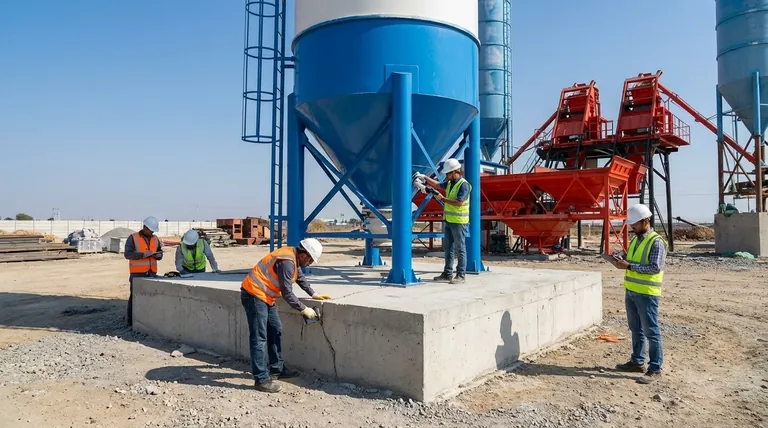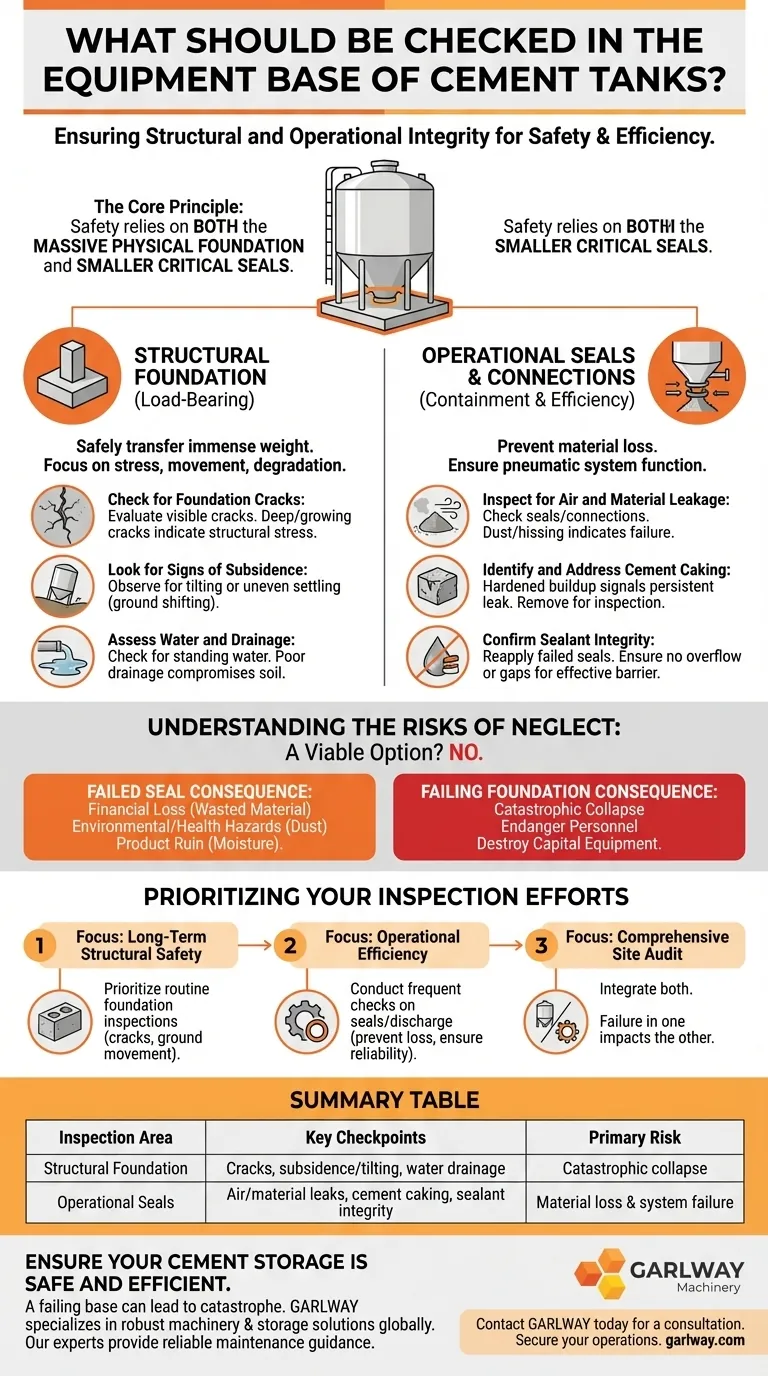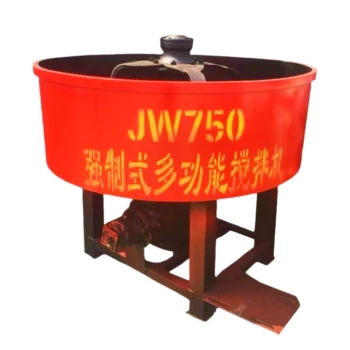To properly inspect the equipment base of a cement tank, you must focus on two distinct but related areas: the structural integrity of the concrete foundation and the operational integrity of the equipment's seals. The foundation ensures the tank remains stable and supported, while the seals prevent material loss and air leakage at connection points.
The core principle is that a cement tank's safety relies equally on its massive physical foundation and its smaller, critical seals. A failure in either the macro-structure or the micro-sealing can lead to catastrophic failure, operational downtime, and safety hazards.

The Two Pillars of a Stable Base
A cement tank's "base" isn't a single component. It's a system composed of the load-bearing foundation that meets the ground and the operational base of the tank itself, where equipment connects and material is discharged. A thorough inspection must address both.
Inspecting the Structural Foundation
The foundation's job is to safely transfer the immense weight of the tank and its contents to the ground. Its inspection is focused on identifying signs of stress, movement, or degradation.
Check for Foundation Cracks
Any visible cracks in the concrete base should be evaluated immediately. While minor surface-level crazing can be normal, deep or growing cracks can indicate serious structural stress or foundation failure.
Look for Signs of Subsidence
Observe if the tank is perfectly level. Any tilting or uneven settling suggests that the ground beneath the foundation is shifting or unable to support the load. This is a critical safety issue tied directly to the site's geological conditions.
Assess Water and Drainage
Look for standing water around the foundation. Poor drainage can saturate the soil, compromising its load-bearing capacity and potentially leading to foundation movement or erosion over time, especially if groundwater levels are high.
Verifying Operational Seals and Connections
This part of the inspection focuses on preventing the loss of cement and ensuring the pneumatic systems function correctly. It's about containment and efficiency.
Inspect for Air and Material Leakage
Carefully check all seals and connection points at the bottom of the tank. Any sign of cement dust or audible air hissing indicates a failed seal, which wastes material and can disrupt the proper functioning of the entire system.
Identify and Address Cement Caking
Hardened cement built up around the base or discharge points is a clear sign of a persistent moisture or material leak. This caking must be carefully removed to properly inspect and repair the underlying seal.
Confirm Sealant Integrity
If a leak has been identified and caked material removed, the seal must be correctly reapplied. Observe the new seal to ensure there is no overflow or gaps, confirming a tight, effective barrier has been re-established.
Understanding the Risks of Neglect
Ignoring issues at the equipment base is not a viable option. The consequences are direct and severe, ranging from minor operational issues to complete structural failure.
The Consequence of a Failed Seal
A leaking seal leads to direct financial loss from wasted material. It also creates environmental and health hazards from airborne cement dust and can introduce moisture, which ruins the stored product.
The Consequence of a Failing Foundation
Foundation failure is the most critical risk. The immense weight of a cement tank means that any structural compromise can lead to a sudden and catastrophic collapse, endangering personnel and destroying capital equipment.
Prioritizing Your Inspection Efforts
Your inspection routine should be guided by your primary operational and safety goals.
- If your primary focus is long-term structural safety: Prioritize routine, documented inspections of the concrete foundation, looking for any new cracks or signs of ground movement.
- If your primary focus is operational efficiency: Conduct frequent checks on all equipment seals and discharge points to prevent material loss and ensure system reliability.
- If you are conducting a comprehensive site audit: Integrate both structural and operational checks into a single process, as a failure in one area will eventually impact the other.
A systematic approach to base inspection is the most effective way to ensure the safety, reliability, and longevity of your bulk storage system.
Summary Table:
| Inspection Area | Key Checkpoints | Primary Risk |
|---|---|---|
| Structural Foundation | Cracks, subsidence/tilting, water drainage | Catastrophic collapse |
| Operational Seals | Air/material leaks, cement caking, sealant integrity | Material loss & system failure |
Ensure your cement storage is safe and efficient. A failing base can lead to catastrophic collapse or costly material loss. GARLWAY specializes in robust construction machinery and storage solutions for construction companies and contractors globally. Our experts can help you assess your equipment's integrity and provide reliable replacements or maintenance guidance.
Contact GARLWAY today for a professional consultation and secure your operations.
Visual Guide

Related Products
- HZS35 Small Cement Concrete Mixing Batch Plant
- JW1000 Mobile Cement Mixer Concrete Mixer Truck and Batching Plant
- Hydraulic Concrete Mixer Machine Cement Mixing Equipment for Mixture Concrete
- HZS120 Ready Mix Concrete Batching Plant Commercial Mud Cement Mixer
- HZS75 Concrete Batching Plant Cement Mixer Price Concrete Mixer Bunnings Mixing Plant
People Also Ask
- How can the discharging stage be optimized to improve overall concrete mixing efficiency? Fix the Mixer-to-Vehicle Handoff Bottleneck
- How does a small cement mixer save time? Automate Mixing & Boost Efficiency on Your Site
- What are the factors influencing choice of a concrete mixing plant? Key Considerations for Efficiency
- How does a small cement mixer save money? Boost Efficiency & Reduce Labor Costs
- How does a small cement mixer improve time efficiency? Automate Mixing & Boost Productivity














